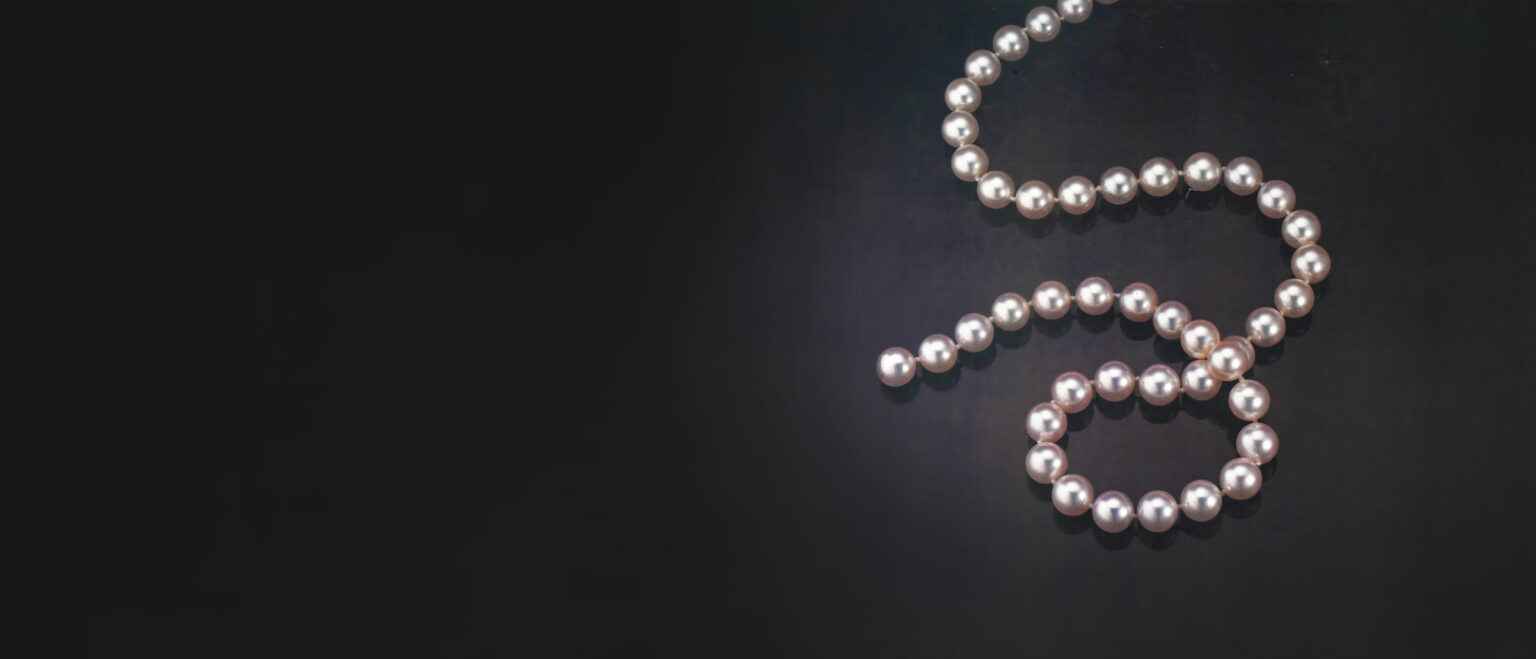According to Islamic mysticism, the first thing God created was a tablet on which was recorded every event that would ever take place until Judgment Day. Next, God created a perfect sphere some 70,000 leagues in size with 70,000 tongues to sing His praises that He turned into the mighty ocean from which all life emerged.
Both the tablet and sphere were made of pearl.
Given such veneration for this organic gem, it is hardly surprising that for centuries men dreamed of systematically forcing oysters to grow more pearls—rather than leave production to the highly selective whims of nature. Experimentation with pearl culturing is recorded as far back as the 12th century.
But it wasn’t until seven centuries later, in the 1890s, that two Japanese working independently of each other discovered a workable pearl culturing method, one that took until 1908 to perfect. Using this method, Japanese pearl farmer Kokichi Mikimoto, to pearls what Henry Ford is to cars, introduced the Japanese akoya (meaning: cultured) pearl in 1919. For years thereafter, Mikimoto was a one-man De Beers for pearls, his farms credited with at least 75% of the gem’s entire world production.
Today, the cultured pearl market has many more than one kingpin. But it is still tightly controlled by the Japanese whose akoya variety harvests account for at least 70% of annual pearl production. Almost all of the remaining 30%, much from China and the South Seas, is also cultured.
But whereas the ancients wanted more pearls than nature seemed willing to produce, the modern world, it seems at times, could use less. An over-production of low-grade cultured pearls has hurt the stature of this jewelry staple.
The manmade stigma
Because so many pearls from Japan have thin nacre coatings that are scarcely more than overlay, purists still consider the cultured pearl a manmade gem.
It isn’t. True, the pearl is provoked by man when live mollusk mantle tissue along with a sizeable spherical bead nucleus cut from a Mississippi drainage area mussel shell are inserted into the oyster. But such intervention alone doesn’t make the cultured pearl non-natural, not when you realize that pearl farmers think themselves lucky when 20% of their implanted oysters grow pearls. If all goes well, the implanted mantle tissue will shortly envelop the bead and that will trigger layerings of nacre (mother of pearl) around the nucleus by the host oyster. Several hundred layerings are needed for a decent pearl, a thousand or more for top grades. Unfortunately, decent nacre buildup takes at least three years. Well into the 1950s, says John Bucher of Golay Buchel USA Ltd., New York, “three-year growing times were still the norm in Japan and four- and five-year cycles common.” To meet unprecedented demand in this decade, average pearl growing times, already trimmed to two years, were whittled further to 18 months, even less. The end result: a highly predictable and publicized flood of substandard pearls. As their meager nacre coatings wore off, consumer confidence wore out. Now, say dealers, the deluge is ending and the Japanese are pledged to quality again.
Problematic promise
Pearl culturing standards aren’t what they used to be. Greed is as much to blame as nature. Besides abbreviated growing times, the tank-bred pearl oysters used nowadays are less hardy than those once taken directly from the sea. Overcrowding waters with these oysters only weakens them more by putting greater drain on nutrients. Add to this a typhoon or two, as well as increased pollution, and the chances of a banner pearl crop turn even more. No wonder the Japanese talk seriously about transferring the pearl culturing process from the sea to the laboratory. Using genetic engineering techniques, it is hoped that pearls can one day be grown in test tubes rather than oysters.
Meanwhile, the Japanese must contend with conditions far less conducive to growing the lustrous cultured pearls that nearly 70 years ago so easily stole the thunder of the natural variety. Those pearls required great skill to identify by eye (now it’s done in seconds with X-rays). New York-based gem dealer Maurice Shire, Maurice Shire Inc., even tells a Zen-like story of the day that he finally developed, after years of trying, “the sixth sense” to distinguish natural from cultured pearls. Don’t get us wrong. Magnificent cultured pearls are still produced. But now when quality is stressed over quantity some fear that the akoya pearl may one day be as rare as the natural pearl it replaced.
The Japanese defend their recent growing practices by saying they were only meeting a seemingly insatiable demand for low-end pearl strands. That demand intensified when the dollar began to plunge against the yen in 1985 and retailers felt constrained to stay within certain inflexible price boundaries. To their credit, the Japanese tried to hold the line on prices, and today continue to absorb a hefty share of continued dollar devaluations. Yet the temptation to cut corners is undeniable. How else does one explain the fact that tens of thousands of reject pearls, ordinarily barred from export by Japan’s pearl inspection office, have made their way to Transhipping centers such as Hong Kong and then the United States and Europe?
U.S. pearl importers assure us that dumping here of pearls-in-name-only strands is about over. But daily news-magners still carry ads, many from reputable jewelers, of “magnificent” 6-6½mm pearl strands in fashionable 18-inch lengths for $100 to $200. “I couldn’t afford to sell my commercial strands at wholesale for such prices,” complains Ole Schultz-Petersen of Schoeffel USA Inc., New York. Our interviews with East and West Coast pearl importers indicate that $300 is currently the least jewelers can expect to pay for popular 6-7mm, 18-inch strands of decent quality.
Weakened public confidence in pearls may have a beneficial side. Following De Beers’ lead, dealers now seriously entertain a pearl quality advertising and public education program similar to the very successful 4Cs campaign for diamonds. What’s more, there is talk of adopting an industry-wide pearl grading system in the United States that would make price and quality comparisons far easier for retailers and consumers. But even without such innovations, says Alex Edwards of Adachi America Corp., Los Angeles, “The whole problem with substandard goods could be eliminated if jewelers became familiar with pearl quality factors and would physically demonstrate them to customers.”
Please note: this profile was originally published in 1988 in Modern Jeweler’s ‘Gem Profiles: The First 60’, written by David Federman with photographs by Tino Hammid.
The Japanese akoya pearl strand shown in the header image is courtesy of Adachi America Corp., Los Angeles.






